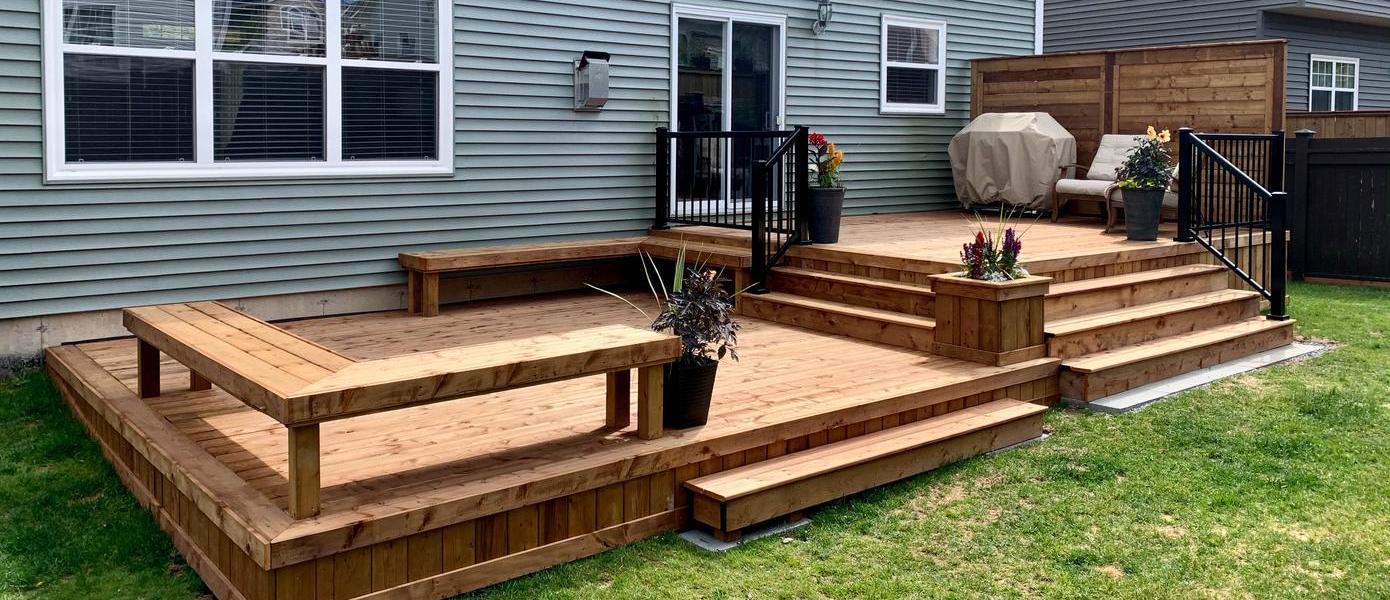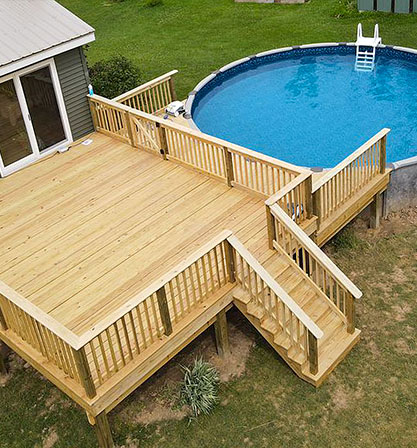A Step-by-Step Strategy to Reliable Deck Installation for Home Owners
When it comes to mounting a deck, careful planning is essential. Start by examining your area and establishing clear goals. Understanding how to design your deck design can make all the difference in maximizing your exterior area.
Assessing Your Area and Setting Goals
Just how do you imagine your suitable deck? Photo an area where you can relax, delight, and enjoy the outdoors. Begin by assessing your backyard's dimensions and format. Take dimensions to understand just how much room you've got to deal with. Think about elements like sunshine, color, and privacy. Consider just how you intend to use the deck: will it be a cozy hideaway, an event place for buddies, or an area for household dishes?
Following, established details goals. Do you wish to integrate seating, a grill, or maybe planters? Imagine the flow of activity and confirm it complements your home's architecture. Focus on performance, but do not neglect aesthetics. Develop a list of must-haves and nice-to-haves. This clearness will certainly assist your choices and streamline the preparation procedure. By evaluating your space and setting clear goals, you'll lay the foundation for a deck that fulfills your demands perfectly.
Choosing the Right Materials
With your goals and area outlined, it's time to choose the ideal materials for your deck. First, consider the environment in your location. If you stay in an area with heavy rainfall or humidity, select products immune to wetness, like composite outdoor decking or pressure-treated timber. If you choose an all-natural look, hardwoods like cedar and redwood supply appeal and longevity but may need even more maintenance.
Next, think of your spending plan. Composite products can be more expensive in advance however typically last longer and need much less maintenance. If you're on a tighter budget plan, treated lumber is inexpensive and commonly readily available, but it might call for regular maintenance.
Lastly, don't forget regarding aesthetic appeals. Pick shades and structures that match your home and landscape. By thoroughly selecting your products based upon these factors, you'll guarantee your deck not just meets your requirements however also enhances your outdoor room.
Designing Your Deck Layout
Developing a well-thought-out deck format is vital for optimizing both capability and pleasure. Begin by taking into consideration how you prepare to use the room. Do you visualize holding huge events or looking for a comfortable area for relaxation? This will certainly direct your layout.
Measure your yard to assure your deck fits sympathetically within the landscape. Consider flow and access; it's essential to create paths that make activity very easy. If you're adding furniture, illustration a design that accommodates seats, tables, and any type of additional features like planters or a fire pit.
Positioning your deck to catch sunlight throughout cooler months can enhance its usability. With mindful planning, your deck layout will certainly not only offer your requirements however likewise boost your outdoor experience.
Obtaining Required Licenses
Before you begin building your deck, it is necessary to inspect neighborhood regulations and obtain the necessary licenses. Each location has certain policies regulating deck building, consisting of size, height, and products - wood deck builders contractors near me. Start by visiting your local building division or their site to collect information on what's needed
You'll likely require to complete a license application and provide comprehensive strategies for your deck, including measurements and products. Do not forget to inspect if any kind of zoning legislations or home owner association standards use to your property, as they may enforce additional limitations.
When you send your application, the testimonial process can take some time, so strategy in advance. If your project doesn't satisfy regional codes, you might require to change your plans, which can delay your setup. By safeguarding the necessary licenses initially, you assure that your deck project remains on track and abide by all laws.
Preparing the Ground and Structure
Preparing the ground and foundation for your deck is necessary for ensuring stability and longevity. Start by selecting the right place-- ideally, a flat area that drains well. Clear the site of any type of particles, plant life, or rocks. Next off, note the outline of your deck using stakes and string to imagine the area.
Once you've defined the area, dig down to eliminate the topsoil, reaching a deepness of concerning 6 inches. This aids protect against dampness accumulation and rot. If you're utilizing concrete footings, dig openings where your articles will go, a minimum of 12 inches deep to get to steady soil.
Consider adding gravel to the bottom of these holes for water drainage. Condense the dirt to develop a strong base, and examine for degree with a long board or degree device. By taking these steps, you'll set a strong structure that supports your deck for years to come.
Building the Deck Structure

This structure is vital for the durability of your deck, so take your time and validate each part is appropriately set up. With your deck structure built, you're one action more detailed to enjoying your new exterior sanctuary!
Including Finishing Touches and Upkeep Tips
Since your deck is built, it's time to concentrate on the completing touches and maintenance. Picking the best tarnish can improve its appearance, while regular cleaning maintains it looking fresh. Don't forget to adhere to a seasonal maintenance list to ensure your deck remains in terrific shape year-round.
Picking Deck Staining Options
How do you choose the ideal tarnish for your deck? Begin by assessing the type of wood. Different timbers soak up stains in different ways, so examine compatibility.

Routine Cleaning Techniques

Seasonal Maintenance Checklist
A well-maintained deck can change your exterior room into a spectacular retreat, so it's crucial to adhere to a seasonal maintenance checklist. Beginning each spring by examining for any damages, such as loose boards or rusting fasteners. Tidy the surface area extensively, getting rid of dirt and debris. Once dry, use a protective sealant to defend against dampness and UV rays.
In summer season, look for mold or mildew and address it immediately. Keep the deck without mess and look for indications of wear.
As fall strategies, clear leaves and particles to why not check here stop moisture build-up. Tighten any kind of loose screws.
Lastly, during winter months, validate that snow and ice are removed to avoid structural damage. Normal attention to these jobs maintains your deck looking excellent year-round!
Often Asked Questions
Exactly how Lengthy Does a Typical Deck Setup Take?
A typical deck installment can take anywhere from a couple of days to a couple of weeks, relying on size, products, and weather condition. You'll want to prepare accordingly to guarantee every little thing goes efficiently and effectively.
Can I Install a Deck on Irregular Ground?
Yes, you can install a deck on irregular ground. You'll require to level the location, usage adjustable message sustains, or take into consideration building a multi-level deck to suit the incline and guarantee security.
What Tools Do I Need for Deck Installment?
You'll require a couple of vital tools for deck setup: a tape step, degree, saw, drill, hammer, and screws. Don't forget security equipment like gloves and safety glasses to keep yourself protected while working.
How Do I Ensure My Deck Is Safe and Sturdy?
To ensure your deck's risk-free and durable, on a regular basis look for loosened boards, secure barriers, and correct support. Use top quality products, follow building regulations, and think about expert evaluations to maintain its honesty with time.
What Are Usual Mistakes to Stay Clear Of Throughout Setup?
When mounting a deck, stay clear of common mistakes like improper measurements, ignoring licenses, making use of low-grade materials, or avoiding the progressing procedure. These oversights can compromise safety and security and resilience, so take note of information throughout the job.